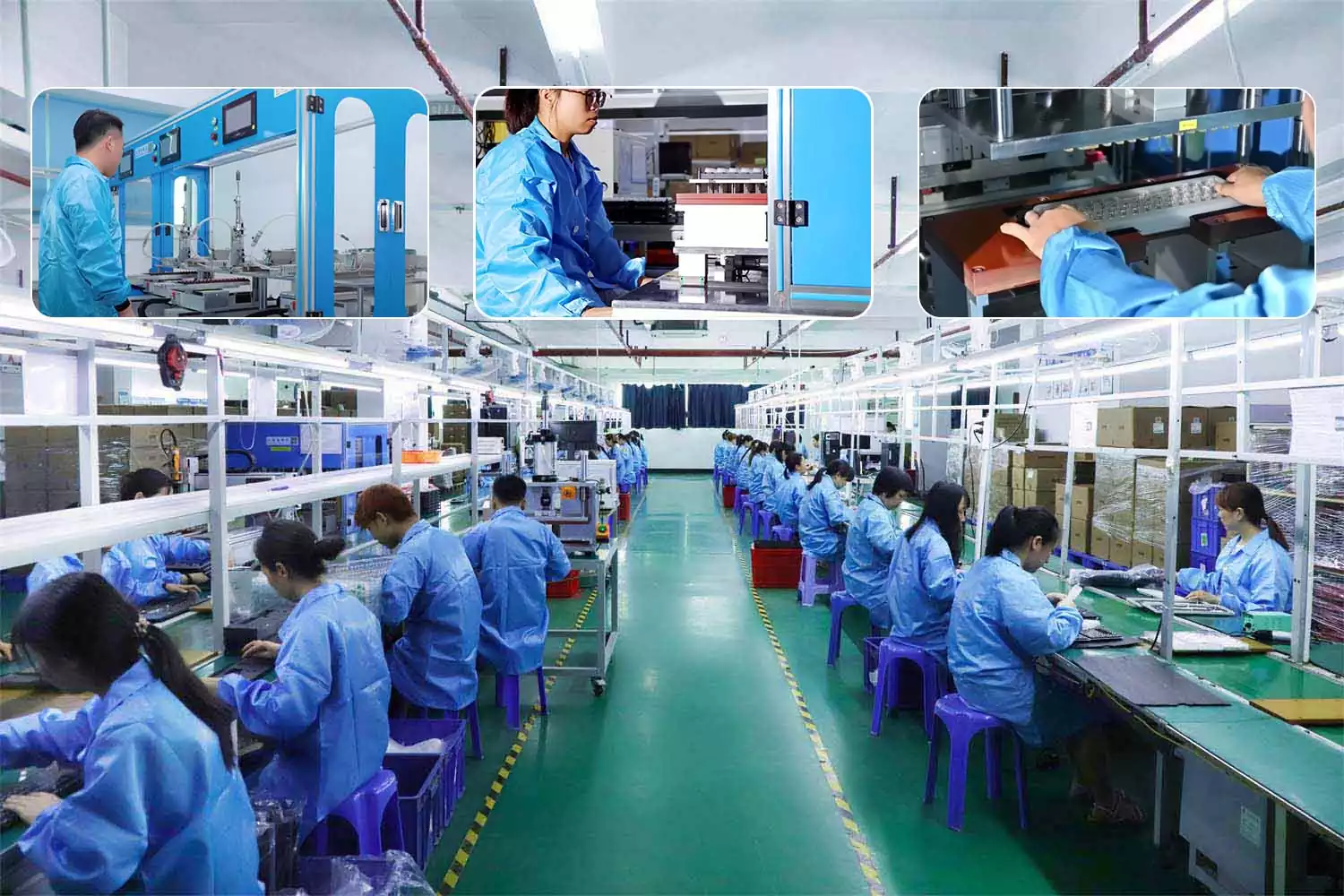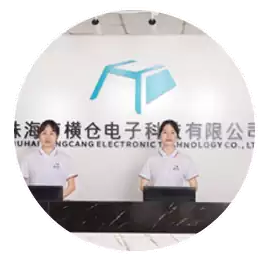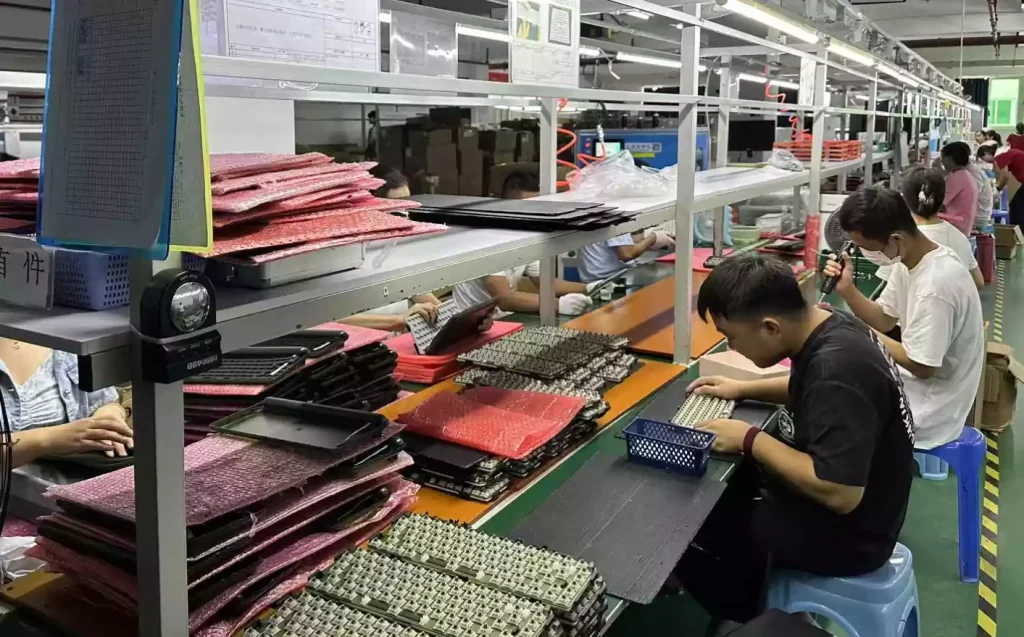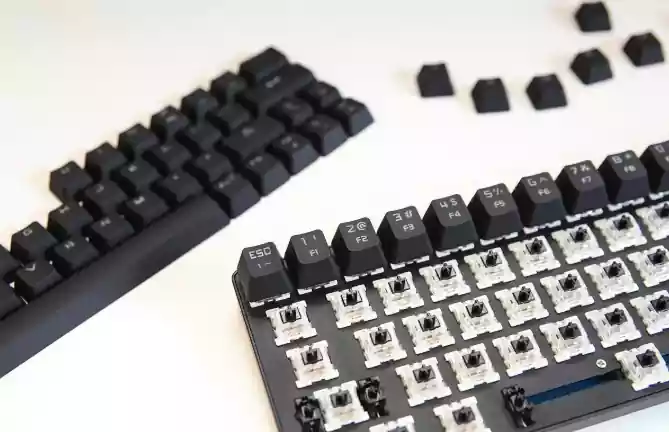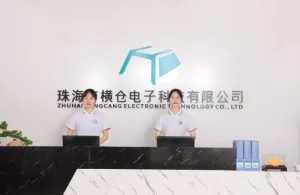A Single Patent: Opening a New Chapter in Mechanical Keyboard Manufacturing Processes

In the computer peripheral sector, mechanical keyboards have become the go-to choice for esports players, programmers, and typing professionals who pursue the ultimate experience. Amid this relentless pursuit of quality and typing feel, Zhuhai Hengcang Electronic Technology Co., Ltd. is ushering in a revolution in the keyboard manufacturing industry—all thanks to its innovative carbon fiber keyboard patent.
Carbon Fiber: A Revolutionary Material Choice for Keyboards
As a high-tech material, carbon fiber owes its value to its exceptional performance characteristics: it boasts exceptional strength yet remarkable lightness, along with excellent heat resistance and corrosion resistance, and even exhibits good electrical conductivity. These properties address long-standing pain points in traditional keyboard materials (e.g., metal’s heaviness, plastic’s low durability) and make carbon fiber an ideal material for high-end mechanical keyboard manufacturing—especially for scenarios requiring both structural stability and portability, such as gaming setups and mobile office environments.

Compared with traditional metal materials, carbon fiber weighs only one-fourth that of steel while boasting far greater strength than steel. This key characteristic allows mechanical keyboards made with carbon fiber to significantly reduce weight while maintaining sturdiness and durability—a major boost to portability, making them ideal for users who need to carry their keyboards for gaming tournaments, mobile office work, or on-the-go creative tasks.
Zhuhai Hengcang Electronic Technology’s carbon fiber keyboard patent (Authorization Announcement No.: CN 222530288 U) was developed precisely based on these advantages. Beyond showcasing the company’s in-depth understanding of materials science, this innovation also reflects its user-centric product design philosophy—addressing the long-standing trade-off between "keyboard durability" and "portability" that has plagued traditional metal or plastic keyboards.

Technical Highlights of Hengcang Electronics’ Carbon Fiber Mechanical Keyboardr
Magnetic Height-Adjustable Design
The most innovative feature of Zhuhai Hengcang Electronic Technology Co., Ltd.’s (Hengcang Electronics’) carbon fiber mechanical keyboard lies in its height-adjustable design. The keyboard is equipped with at least two sets of optional, installable height-adjustment structures—each set featuring a distinct height difference (e.g., 5mm and 10mm increments). This allows users to flexibly adjust the keyboard’s height based on personal usage habits (e.g., typing posture for long hours) and environmental needs (e.g., matching desk height or ergonomic setups).
Notably, this adjustment function is achieved via magnetic attachment: each height-adjustment structure consists of a height-enhancing main body and a first magnetic component, which aligns and adheres to a second magnetic component integrated into the keyboard’s inner connection base. This design not only ensures stable connection (tested to withstand 3kg of lateral pressure without shifting during typing) but also makes height adjustment simple and fast—no tools required. Users can attach or detach the height-adjustment structures in seconds, eliminating the hassle of screwing or disassembling parts like traditional adjustable keyboards.
Rigorous Structural Design
To balance durability, lightweight performance, and user experience, Hengcang Electronics’ carbon fiber keyboard features a well-engineered structure centered around three core components:
Keycaps: Typically made of wear-resistant PBT plastic (or optional ABS plastic for RGB backlit models), the keycaps are designed to fit seamlessly with the key switches. Each keycap undergoes sandblasting or UV coating treatment to prevent oil buildup and maintain a 干爽 tactile feel—complementing the keyboard’s high-end positioning.
Outer Case: Composed of a base and an inner connection base. The base—made entirely of high-modulus carbon fiber material—delivers exceptional impact resistance (able to withstand 1.5-meter drops without deformation) while keeping the overall weight 30% lighter than aluminum alloy bases. The inner connection base, crafted from reinforced ABS plastic, serves as a stable interface for the magnetic height-adjustment structures and internal components.
Inner Assembly: Acts as the "core" of the keyboard, including a PCB (Printed Circuit Board) for stable signal transmission, a fixing plate to secure key switches (preventing wobble during typing), and high-quality mechanical key switches (compatible with Cherry MX or custom switch types). The fixing plate is also paired with shock-absorbing gaskets to reduce typing noise and enhance tactile feedback.

Technical Advantages & Market Outlook of Hengcang Electronics’ Carbon Fiber Keyboard
Thoughtful Structural Design for Enhanced User Experience
Beyond its rational layout, this structural design also reflects thoughtful consideration for user experience. A cushion pad is attached to the bottom of the keyboard base to prevent scratches on desks and reduce typing vibrations. Meanwhile, the top of the height-adjustment main body is equipped with upward-opening avoidance grooves (to prevent interference with internal components like key switches) and first mounting grooves—ensuring seamless fit between all parts. This attention to detail eliminates common pain points of traditional keyboards (e.g., loose components, uneven contact) and guarantees consistent usability over time.
Unique Advantages of Carbon Fiber in Keyboard Manufacturing
1. Exceptional Typing Feel & Sound Performance
Compared to plates made of other materials (e.g., aluminum, copper, PC), carbon fiber plates stand out for their distinctive typing feel and sound. Based on feedback from keyboard enthusiasts, carbon fiber plates deliver a "firm yet flexible" typing experience—solid and consistent, with minimal wobble during keystrokes. Unlike rigid metal plates, carbon fiber also has slight elasticity, paired with a lighter weight than standard steel plates, reducing finger fatigue during long typing sessions.
When it comes to sound performance, carbon fiber plates produce a crisp, clear keystroke sound. This acoustic characteristic falls between the deep, heavy sound of copper plates and the dull, muted sound of aluminum plates—creating a unique auditory experience that is particularly popular among users of linear switches (e.g., Cherry MX Red, Gateron Red), as it enhances the smoothness of linear switch feedback without adding excessive noise.
2. Balanced Lightweight & Durability
Carbon fiber’s lightweight property allows the keyboard to significantly reduce overall weight while maintaining structural sturdiness—a game-changer for users who need to carry their keyboards frequently (e.g., esports players traveling to tournaments, remote workers moving between offices). Additionally, carbon fiber boasts an impressive tensile strength of 300 g/kg/mm², far exceeding that of plastic and even some metals. This means carbon fiber keyboards offer exceptional durability, with a typical lifespan of over 50 million keystrokes—meeting the demands of heavy users.
Hengcang Electronics’ Innovative Strength
Founded in 2018, Zhuhai Hengcang Electronic Technology Co., Ltd. is a relatively young enterprise but has already demonstrated remarkable innovation capabilities. According to Tianyancha (a leading Chinese business data platform), the company holds 19 patents, 2 trademark registrations, and 4 administrative licenses—numbers that reflect its sustained investment in R&D and technical accumulation.
Hengcang Electronics focuses on the manufacturing of computer, communication, and other electronic equipment. Its carbon fiber keyboard patent (filed in March 2024 and authorized in February 2025) underscores the company’s consistent pace of innovation—turning cutting-edge material science into practical, user-centric keyboard solutions.
Market Positioning & Prospects of Carbon Fiber Keyboards
1. Targeting the High-End Keyboard Market
With its lightweight design, high strength, and unique typing feel, carbon fiber keyboards are primarily positioned in the high-end mechanical keyboard market. They cater to discerning users who prioritize performance and portability—including professional esports players, programmers, and content creators who rely on keyboards for hours daily.
2. Aligning with the Rise of Custom Keyboards
As the custom mechanical keyboard market grows rapidly, users are demanding greater personalization, better feel, and more premium aesthetics. Carbon fiber not only excels in performance but also carries a unique sense of technology and modernity—its sleek, woven texture adds a high-end touch to keyboard designs, aligning with current market preferences for premium computer peripherals.
3. Supporting Sustainable Development
From an environmental perspective, carbon fiber production is relatively eco-friendly compared to traditional metal processing (e.g., aluminum smelting, which consumes large amounts of energy). Moreover, carbon fiber waste can be recycled and repurposed—making carbon fiber keyboards compliant with the increasingly important concept of sustainable development, a key consideration for environmentally conscious consumers and businesses.
Keyboard Plate Material Comparison: Carbon Fiber’s Unique Position
Among the various materials used for keyboard plates, each has distinct characteristics. Carbon fiber plates stand out for their balanced performance, as shown in the table below:
| Material Type | Typing Feel | Keystroke Sound | Weight | Suitable User Group |
|---|---|---|---|---|
| Aluminum Plate | Balanced, moderate firmness | Dull, muted | Medium | General users seeking standard performance |
| Copper Plate | Stiff, strong feedback | Deep, heavy | Heavy | Users who prefer strong tactile feedback |
| PC Plate | Soft, flexible | Mellow, "vibrant" (subjective) | Light | Enthusiasts pursuing a "soft typing experience" |
| FR4 Plate (Fiberglass) | Moderate firmness (softer than carbon fiber) | Dull, slightly muted | Medium-light | Budget-conscious users seeking balance |
| Carbon Fiber Plate | Firm yet flexible, consistent | Crisp, clear | Lightest | Users prioritizing portability, consistency, and unique sound |

In This Comparison: Carbon Fiber Plates Secure a Unique Niche in the High-End Market
Thanks to its distinct advantages—unique typing feel, crisp sound performance, and lightweight properties—carbon fiber plates stand out from other materials and secure a one-of-a-kind position in the high-end mechanical keyboard market. Unlike aluminum (too muted) or copper (too heavy), carbon fiber strikes a rare balance between usability, portability, and sensory experience, making it the top choice for enthusiasts and professionals seeking premium keyboard performance.
Conclusion
The carbon fiber keyboard patent from Zhuhai Hengcang Electronic Technology Co., Ltd. represents an innovative breakthrough in the mechanical keyboard manufacturing sector. By combining high-tech carbon fiber materials with an ingenuous height-adjustable design (powered by magnetic attachment), Hengcang Electronics has delivered a high-end mechanical keyboard solution that balances three critical user needs: lightweight portability, structural sturdiness, and customizable adjustment.
As consumer demands for high-quality computer peripherals continue to rise, carbon fiber keyboards are poised to become a new go-to option for users seeking an exceptional typing experience. This innovation from Hengcang Electronics not only showcases the R&D capabilities of Chinese enterprises in the computer peripheral industry but also offers new insights into the future development direction of the global mechanical keyboard manufacturing sector—proving that material science and user-centric design can redefine product standards.
Amid the rapid advancement of technology today, Zhuhai Hengcang Electronic Technology is injecting new vitality into the mechanical keyboard industry through its in-depth understanding of materials science and unwavering commitment to technological innovation. For users, this means more durable, portable, and sensory-pleasing keyboard products—turning daily typing into a refined experience.

